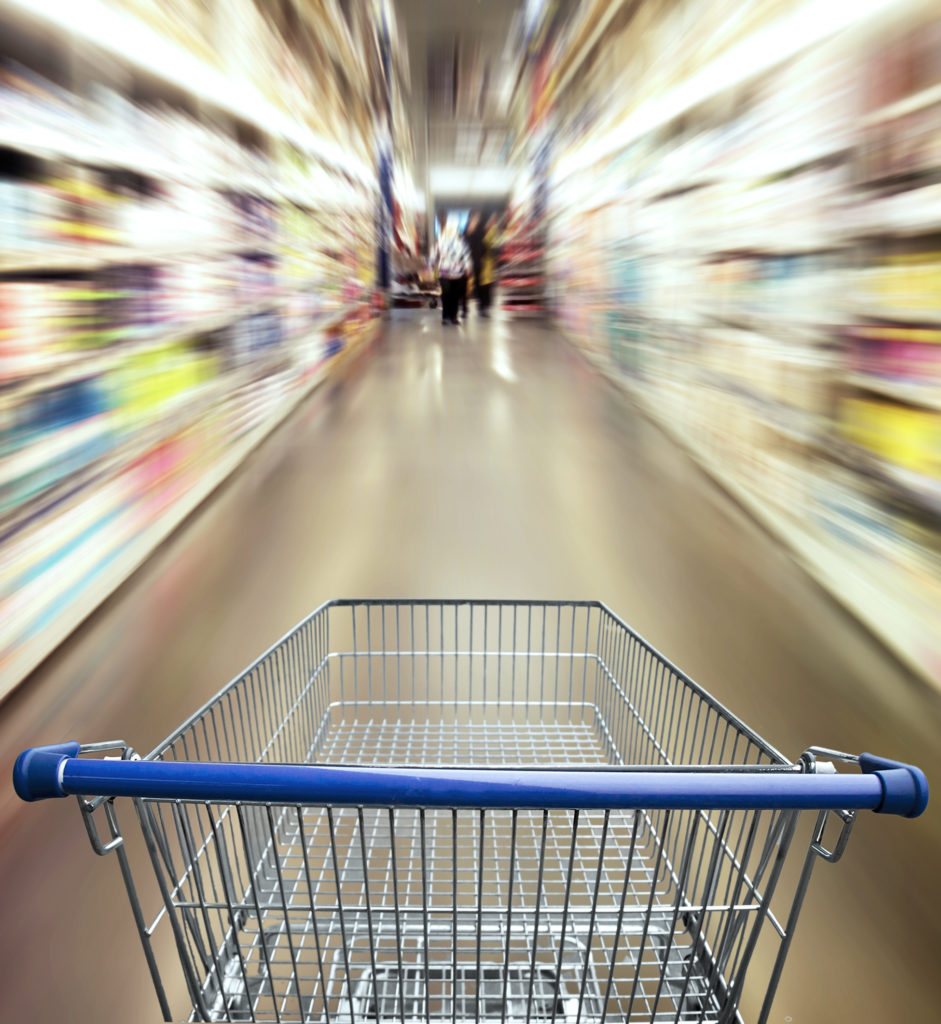The Secret to Cutting Down Grocery Picking Costs
Imagine hopping into an Uber that’s not equipped with a navigation system. Your driver circles around in areas he’s not familiar with, looking for your destination. It’s a waste of your time, and Uber’s money. Welcome to the world of grocery picking.
“Grocery picking”, when employees do the physical shopping for customers who placed their orders online, is trending among retailers large and small. But grocery pickers don’t come cheap. And at their premium price (up to 63% of operational costs1 ), high levels of accurate fulfillment are essential to make them worthwhile to retailers.
As a relatively new solution for bridging the online to offline gap, grocery pickers are a great idea, but there are still a few kinks to work out. What if there was a simple solution for optimizing their efficiency and cutting labor costs?
Obstacles to Cost-Effectiveness
Training Investment
Grocery pickers, as a field, experience high rates of turnover, making their training a costly investment to retailers. IndoorGPS can help streamline and shorten the training process (making it less of an investment)- by providing pickers with optimized routes for their shopping list.
There’s no way to teach someone the layout of a store and have them picking within a few hours. But if technology can bypass the need for training (think: optimized navigation via smartphone), that kind of quick onboarding becomes more possible.
Training presents an even bigger obstacle for a new picking trend, with companies like Instacart and Shipt hiring out-sourced “shoppers” to fulfill online orders. Virtually anyone can sign up to be a “shopper”, and for many people, it’s a nice side-hustle. But this Uber-like model makes any sort of legitimate training virtually impossible.
And it’s fair to assume that these “shoppers”, when directed to a supermarket to shop someone else’s order, may not be familiar with the layout of the store, and oftentimes, have never even visited that particular store. And that means they could be struggling with finding items.
Finding Products, Planning Routes
Generally speaking, inability to find items quickly within a store is the biggest hindrance to grocery pickers’ efficiency. Often covering miles in-store per day, even spending just a few minutes looking for an item can cause drastic delays — and for grocery pickers, every second counts.
“I’m just staring [down an aisle] like, ‘Where is the molasses?’
Those moments to me are the worst because in my mind I feel the clock moving.”
–Anonymous InstaCart Shopper2
Even seasoned grocery pickers working in a store they’re familiar with often run into difficulty finding items and optimizing their routes. Planning routes is better left to AI, especially when you’ve got a 50-item list to complete in minutes.
“Wasted” miles, when employees back-track or zig zag their routes, are slowing grocery pickers down by up to 30%.

Grocery Pickers struggle with finding items.
Measuring Effectiveness
Retailers are constantly updating and changing aspects of the grocery-picking process in an effort to optimize fulfillment – even down to what kind of music provides the best motivation.
“You can’t manage what you can’t measure.”
–Peter Drucker
What is really needed is full analytical visibility into what works- and what doesn’t. Data on foot traffic patterns and layout performance, via Indoor GPS, provide the tools necessary for better evaluation and decision-making. Insights on staff’s ability to comply with picking procedures allows for more strategic productivity solutions.
Even in “Dark” stores, where lack of customers means there’s more clarity into picking performance, better analytical tools are necessary to truly be able to measure the efficacy of procedures.
So, how can grocery pickers’ jobs be optimized to make fulfillment more cost-effective?
(Way)Finding a Solution
This is where IndoorGPS sheds a promising light. By providing grocery pickers with shopping lists combined with navigation, ushering them to each product already saves a huge amount of time. But then optimizing those routes to give grocery pickers the fastest and most logical path throughout the store can save them minutes per order they fill. That can add up to several extra orders per picker every hour.
Additionally, utilizing analytics collected from an indoor positioning system allows management to exercise better decision-making in regards to store layout and organizing operations, furthering the optimization potential.
IndoorGPS has never really been a viable solution – requiring costly hardware installation and upkeep, without delivering the accuracy needed to be effective. But now, Oriient provides a convenient, hardware-free Indoor GPS service which can be integrated into existing apps.
Once integrated, grocery pickers can utilize navigation that optimizes route and updates position in real-time, while being guided to products within shelf-level (3ft/1 m) accuracy. And retailers and delivery services have access to vital analytics, delivering the tools necessary to optimize store layout and staff performance.
Using an IndoorGPS service to its full extent is expected to result in a 40% increase in grocery picker productivity.
Click here to learn more about Oriient’s hardware-free Indoor Positioning Solution.
1 “Importance of Order Picking”, Georgia Tech.
2 Huffpost
